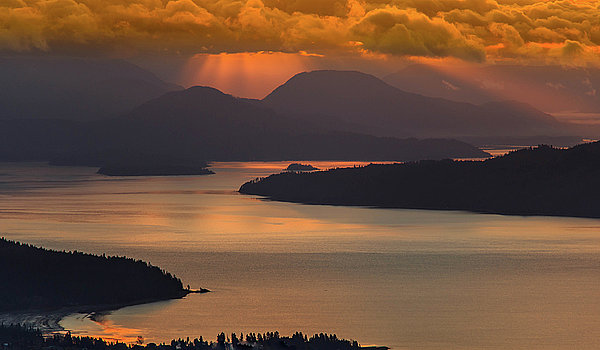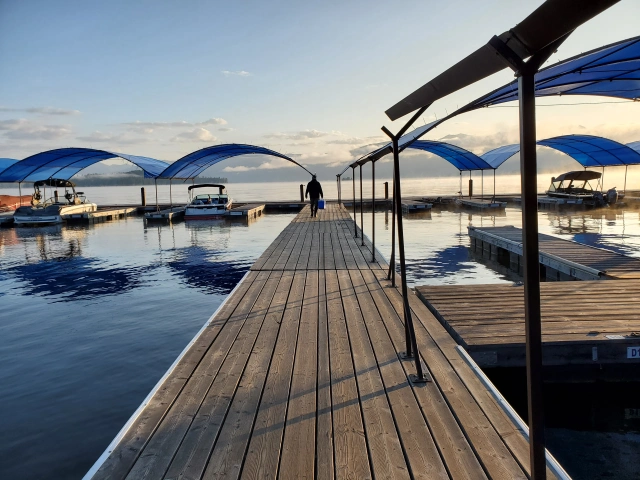Today’s Elevation on Lake Pend Oreille
Historic Elevations on Lake Pend Oreille – in the blue box you will see Begin and End Dates, enter the dates you are interested in.
Historic Flooding on Lake Pend Oreille
2,075.88 ft on 06/01/1894
2,071.62 ft on 06/09/1948
2,068.76 ft on 06/20/1933
2,067.11 ft on 06/10/1950
2,065.70 ft on 06/12/1972
2,065.47 ft on 06/23/1974
2,065.74 ft on 06/05/1997
2,064.29 ft on 06/17/2011
The Commission was formed in part to help manage the lake level on Lake Pend Oreille, which is a natural lake. The Albeni Falls Dam, located in Oldtown, Idaho, controls the top 11.5 feet of Lake Pend Oreille. Albeni Falls Dam is a federally operated project managed by the U.S. Army Corps of Engineers and power generated from the Dam is marketed by the Bonneville Power Administration. The top 11.5 feet of the lake is used as a reservoir and can be manipulated with certain restrictions for power generation, recreation, fish and wildlife needs, and flood control. The flows from the Pend Oreille Basin contribute substantially to the entire Columbia River Basin and provide economic and ecological benefits downstream when released at desirable times. As such there are numerous pressures on the waters of Pend Oreille and balancing all the desired uses is complex and challenging.
The summer lake level is held at 2062′ to 2062.5′ above sea level for recreation. Most years the spring runoff controls the lake levels through May and June and then the Dam can manage the summer level after the high flows recede. The summer level must be reached by July 4th but is often reached by mid to late June. For the past several years, the summer pool was stabilized from mid-June to September 18th. The lake level should not rise above 2056′ before April 30, for flood prevention, and is typically held at the summer level until the 3rd Sunday in September when it begins the winter drawdown.
According to the Water Control Manual for Lake Pend Oreille, the Corp can begin drafting on September 1 with a maximum drawdown to 2060′ by September 30. Currently, there is an agreement for a later September drawdown of Sept 18th or the 3rd Sunday, whichever is later. The lake won’t begin its full drawdown until Oct 1st and will be at its winter elevations (2051′) by Nov 15th. The winter pool needs to be reached by the second week in November so shoreline kokanee spawners are not left high and dry.
The winter lake level is typically at 2051′ although it could potentially fall anywhere between 2051′ and 2060′ according to the Water Control Manual for Albeni Falls Dam. Since the winter of 2011-2012, the lake level can fluctuate from 2051′ to 2056′, but never fall below the MCE, to allow for increased power generation. This is referred to as Flexible Winter Pool Operations(FWPO). The Lakes Commission is currently working to change this operation, in order to allow for a higher winter lake level for improved access to docks and launches, fish and wildlife habitat, stability to the shoreline and property values.
Priest Lake/Priest River
Today’s Elevation on Priest Lake
Priest River flows 3 miles from the town of Priest River
Priest River flows below Outlet Dam
The elevation of the surface of Priest Lake is around 2,440 feet above sea level. The lake levels are controlled by Outlet Dam which is managed by the Idaho Department of Water Resources. The summer level is managed primarily for recreation and in early October the water is rapidly dropped about three feet to get it down before Kokanee begin spawning. The water is held down for flood control until water flows have slowed and then it is raised to the summer elevation.
The low snowpack, hot temperatures, low humidity, and lack of precipitation made for a stressful 2015 for Priest Lake. Early in July, it became apparent that it might become difficult to hold the lake to the typical summer pool. There were fears that all flows from the lake would need to be shut down into the river in the attempt of maintaining the summer pool. Flows to the river did get very low, but luckily they never needed to be stopped completely. This predicament did reveal issues that will need to be remedied in the future management of Priest Lake. The Idaho Department of Water Resources received $300,000 this year to invest in a number of studies in the Priest watershed. The initial study will evaluate the condition of the dam structure and the possibility of altering the structure. The second study will evaluate possible impacts around the lake from extra water being held back in anticipation of drought conditions. The third study will evaluate how to best replace the Priest Lake Thorofare breakwater structure to best keep the channel open to motorized traffic while also limiting the need for continued dredging. There will be a number of public meetings at Priest Lake on these studies over the course of the summer.


